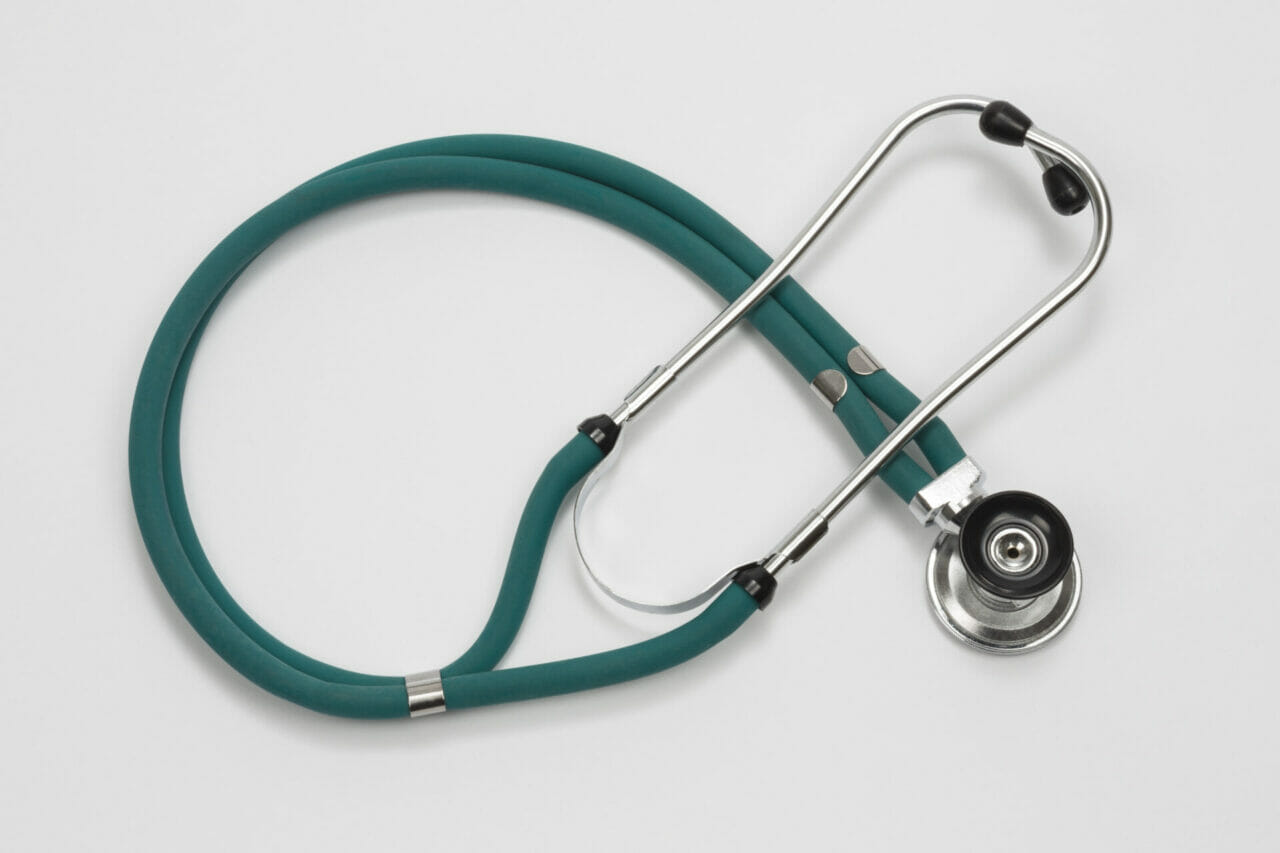The stethoscope is an acoustic device that amplifies body noise to achieve its best perception and therefore the integration of various signs, which are mainly auscultated in the heart, lungs and abdomen. It is generally used in the auscultation of heart sounds or respiratory noises, although sometimes it is also used to objectify intestinal noises or murmurs by abnormal blood flows in arteries and veins.
Stethoscopes are made up of the following parts that, together, transfer the acoustic information from the body surface to the examiner’s ears: It consists of rubber tubes that end in two olive trees that adapt to the ear and also these tubes link with another which contains a diaphragm and a hoods which amplify auscultation sounds, it is essential for the correct measurement of blood pressure in conjunction with the sphygmomanometer.
How does a stethoscope work?
It has a membrane and a hoods. Either part can be placed in the patient. The two detect the acoustic signals that travel through the tubes filled with air and reach the ears of the doctor. The hoods transmits low frequency sounds, it is ideal for listening to the lungs. The membrane, on the other hand, detects high frequencies and allows listening to the heart. To detect the different frequencies, there are two modes: low frequencies high frequencies
What are the parts of the conventional stethoscope?
- Olives: The use of soft olives improves comfort, seal and durability, these are specially coated to improve lubrication and reduce dust adhesion. Available in both sizes, short and long in black and gray colors.
- Hose set: Includes olive, binaural and hose, parts available only in black. It is important that you keep in mind the model of your equipment for an appropriate purchase. The hoses can be one or two volumes depending on the model. The hose is made of PVC (polyvinyl chloride), does not contain latex or natural rubber.
- Hoods: The hoods is an essential part of the stethoscope, it is positioned on the part of the patient’s body or on the organ that he wishes to auscultate.
How to perform preventive maintenance and cleaning?
Stethoscope and olive membranes must be maintained in hygienic conditions to ensure adequate acoustics and avoid the risk of infection transmission, both to the patient and the user. To achieve this, the use of isopropyl alcohol (70%), 5.25% sodium hypochlorite) and Benzalkonium chloride (1: 285) is recommended. These must be resistant to the products used for asepsis. It is very important to consider that when opting for the acquisition of such a device, you should evaluate not only its cost, design, manufacturing materials but the application that will be given to it.
It cannot be the same stethoscope, which is used in a general medicine practice than in a high specialty one. The manufacturing material, both of the auditory tubes and of the body part, is of great importance in determining the quality in the perception of the sounds.
It is suggested as stethoscopes of acceptable quality those of stainless steel and of superior quality to both those of chromed bronze, the same material from which musical instruments are manufactured for being a material of excellent acoustic characteristics, such as titanium which is a very high quality material. resistant. With any other material of inferior quality to stainless steel (aluminum, chrome-plated brass), the quality of hearing in the perceived body noises cannot be guaranteed, much less the safety in the diagnosis that can be formed.
For taking blood pressure in conjunction with a sphygmomanometer, the use of simple stethoscopes is recommended. To be able to integrate a reliable diagnosis based on the high and low frequency noises emitted by the organism, double head stethoscopes must be provided, that is, with a hoods and smooth diaphragm.
Thinking of you in Kalstein we offer you stethoscopes of the highest quality and technology in the market. That’s why we invite you to take a look at our equipment available HERE


